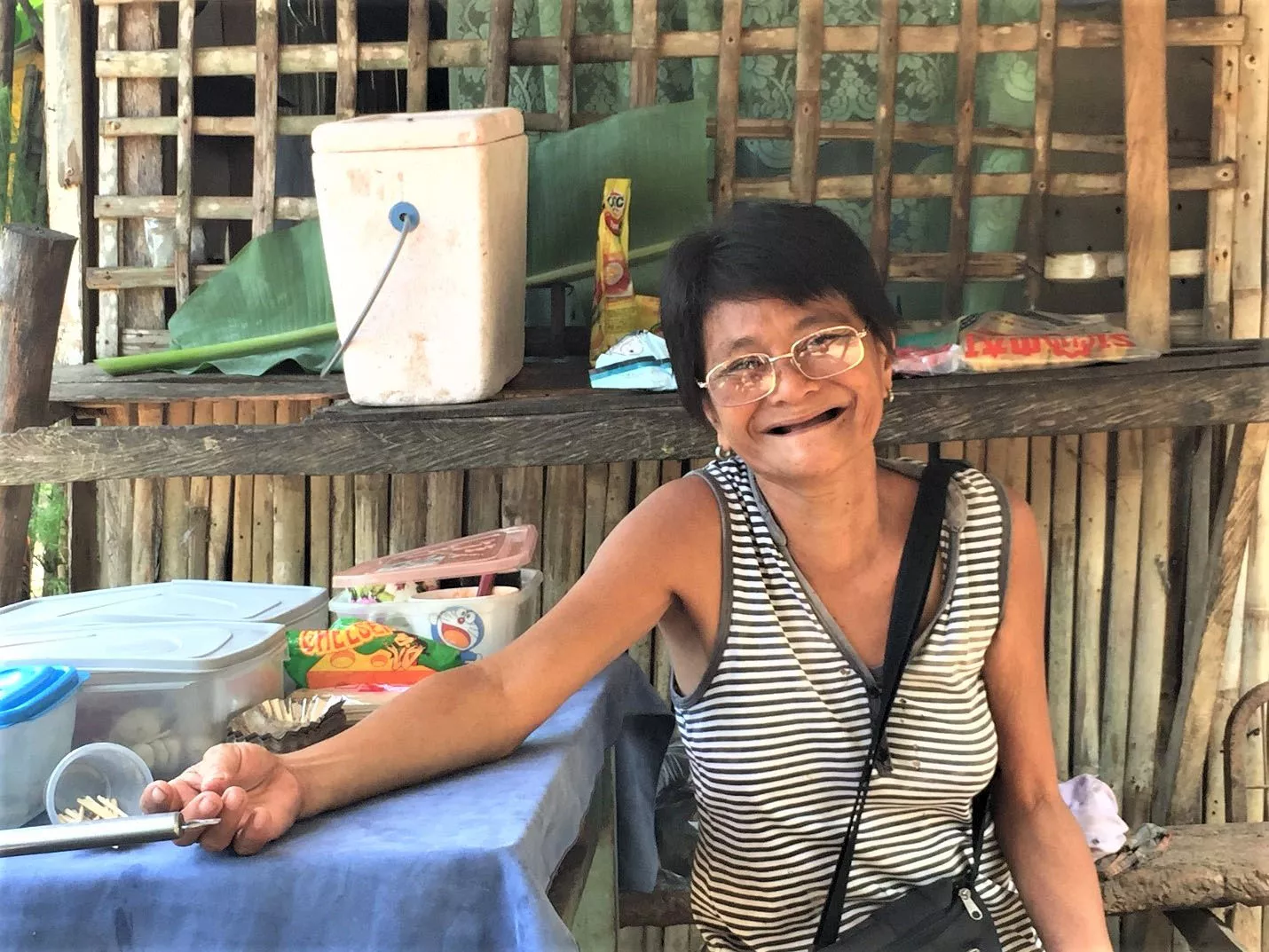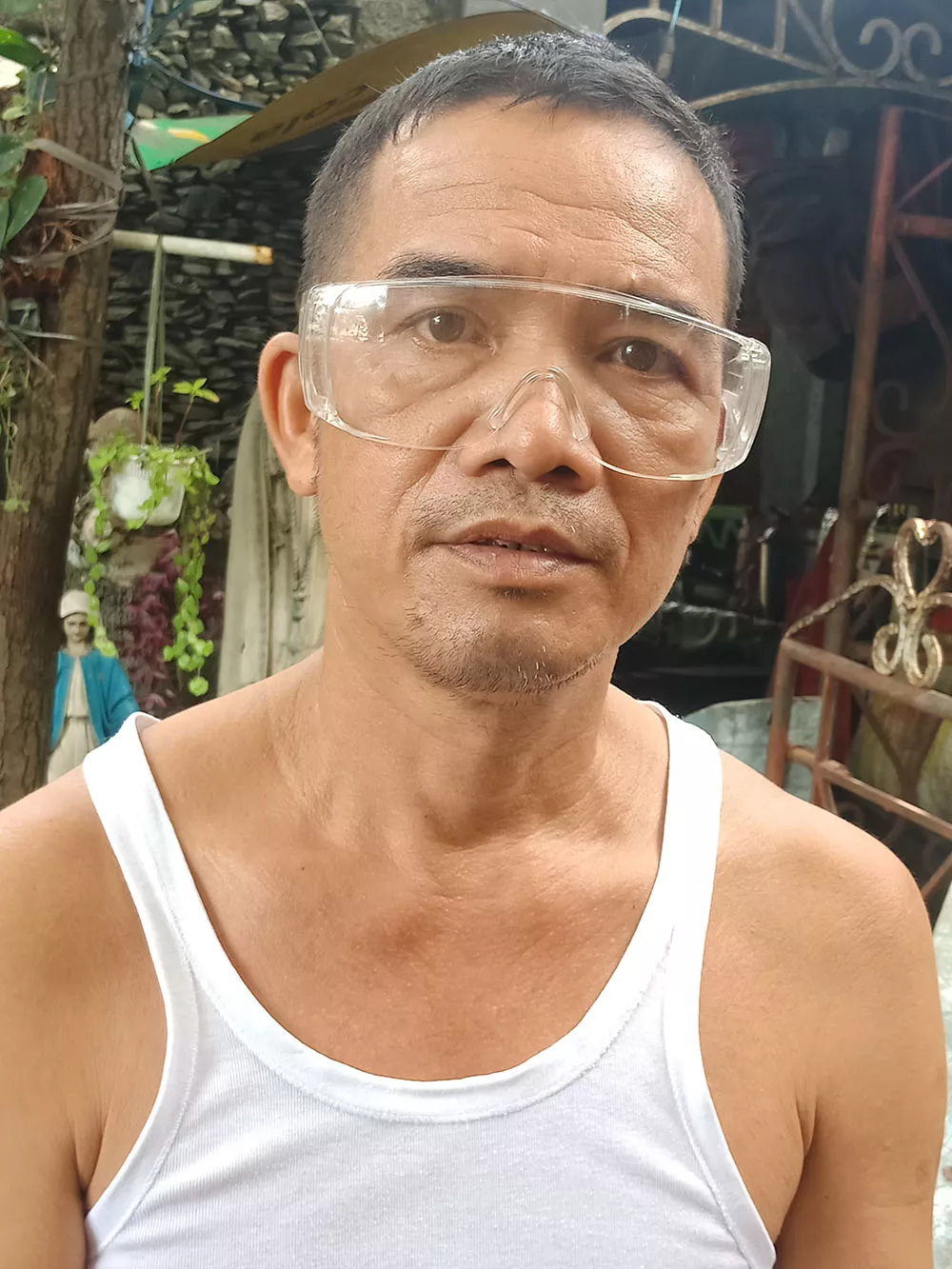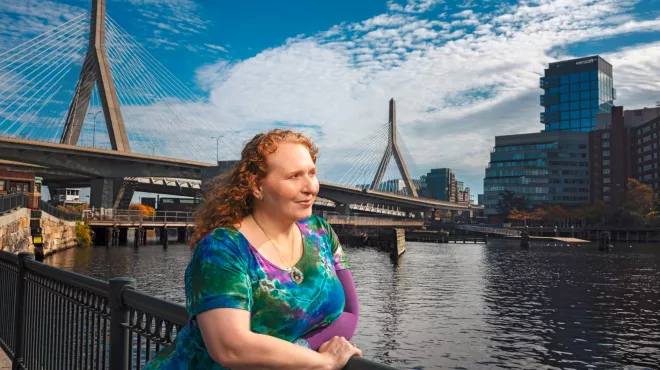Even before her eyes weakened, life in Bayawan City, in the Philippines, was not easy for Leonora Parco. As a laundry woman, she earned around 150-200 pesos (about USD 3-4) per day. With four children to feed, her earnings, combined with what her husband made at a tire repair shop, did not go far. She remembers one night when they had only 50 pesos (about USD 1) between them – just enough to buy a little dried fish and rice that they made into porridge for dinner and breakfast.
And those were better times, before Leonora’s vision began to fail. After a while, she began to notice that her eyes tended to water whenever she focused on something, which meant that doing the laundry kept taking longer and longer. “Sometimes, I couldn’t finish my orders,” she recalls, “and gradually, my customers all left.” To make ends meet, she started selling fish balls and hot dogs off a charcoal grill.
Sadly, Leonora’s situation was far from unique. In the Philippines alone, over 2 million people suffer from vision loss1. Across Southeast Asia, 13.9% of the population has poor eyesight,2 and public health organizations estimate that at least 2.2 billion people worldwide suffer from impaired vision,3 a disability that costs the global economy over USD 400 billion a year4 – more than the annual GDP of the Philippines.5
At least 1 billion – or almost half – of global cases of vision loss could have been prevented or have yet to be addressed.6 In Leonora’s case, all it took was a pair of eyeglasses.
But Leonora might have gone untreated if it weren’t for an international effort to help people like her. “I was too nervous to go to the doctor before,” she says, “thinking that it could be worse than expected and that I wouldn’t be able to afford the treatment.” This only changed after a chance encounter with Lusog Mata, an outreach project by The Fred Hollows Foundation focused on preventable blindness. During a meeting organized by a local women’s club, Leonora was given a sight test and referred to a local optometrist.
The optometrist believed her eye problems were a symptom of eye strain, aggravated by sunlight, wind, dust, and the vapors from her laundry detergent – a problem that could be solved with corrective lenses.
“It’s so clear now!” she exclaimed when she first tried on her new glasses a few weeks later, and it stayed that way: After a month, the 52-year-old could do all her old chores quickly and easily.

Stories like Leonora’s are part of the reason why Novartis initiated the Collaboration to Preserve Sight with a number of organizations to expand equitable access to eye care in remote Southeast Asian communities. This includes vision screening programs in the Philippines, Vietnam and Indonesia – three countries with extremely limited access to eye health care. Besides The Fred Hollows Foundation, collaborators include the Philippines National Committee for Sight Preservation, the Vitreo-Retina Society of the Philippines, and the Indonesian Ophthalmologists Association (IOA/PERDAMI).
We are proud that the Collaboration to Preserve Sight is serving as a catalyst for such teamwork and has involved more than 370 local organizations in its implementation so far.
Ruth Kuguru, Executive Director of Communications & Patient Engagement for the Asia-Pacific, Middle East & Africa region at Novartis
So far, these programs have reached more than 794 000 people through awareness initiatives, screened more than 77 000 people, and detected around 10 000 vision abnormalities. About 7 770 people have been referred to healthcare professionals for further consultation or treatment, and more than 4 000 people have received consultations, surgery or corrective lenses.

Of course, statistics cannot convey the full impact of what restoring sight means to the vision impaired and their families. Consider the story of Edwin Alimagno, a construction worker in Antique, Philippines, whose life fell apart after cataracts (clouding of the lens of the eye) began to limit his vision.
First, Edwin lost his job as a construction worker – an especially painful outcome given his role as his family’s main breadwinner. Racked by guilt, he worried that he had become a burden to his family. Four years went by, and as his vision continued to worsen, Edwin fell into depression and feared he would soon be completely blind.
Then, suddenly, Edwin learned through an outreach program of The Fred Hollows Foundation that the government would shoulder the cost of his cataract surgery – news that restored not only his sight but also his hope for the future.
“I am a poor man. I’ve always been, and I will always be,” he says. “The joy I felt when The Fred Hollows Foundation offered me the opportunity to have free surgery was beyond words. I almost gave up, but miracles do happen.”
“With corrective lenses, surgeries, diagnostics and pharmaceutical therapies, there are more ways than ever to tackle preventable blindness,” says Ruth Kuguru, Executive Director of Communications & Patient Engagement for the Asia-Pacific, Middle East & Africa region at Novartis. “But we need coordination between the industry, patient organizations, government and healthcare professionals to expand equitable access to eye care. We are proud that the Collaboration to Preserve Sight is serving as a catalyst for such teamwork and has involved more than 370 local organizations in its implementation so far.”



